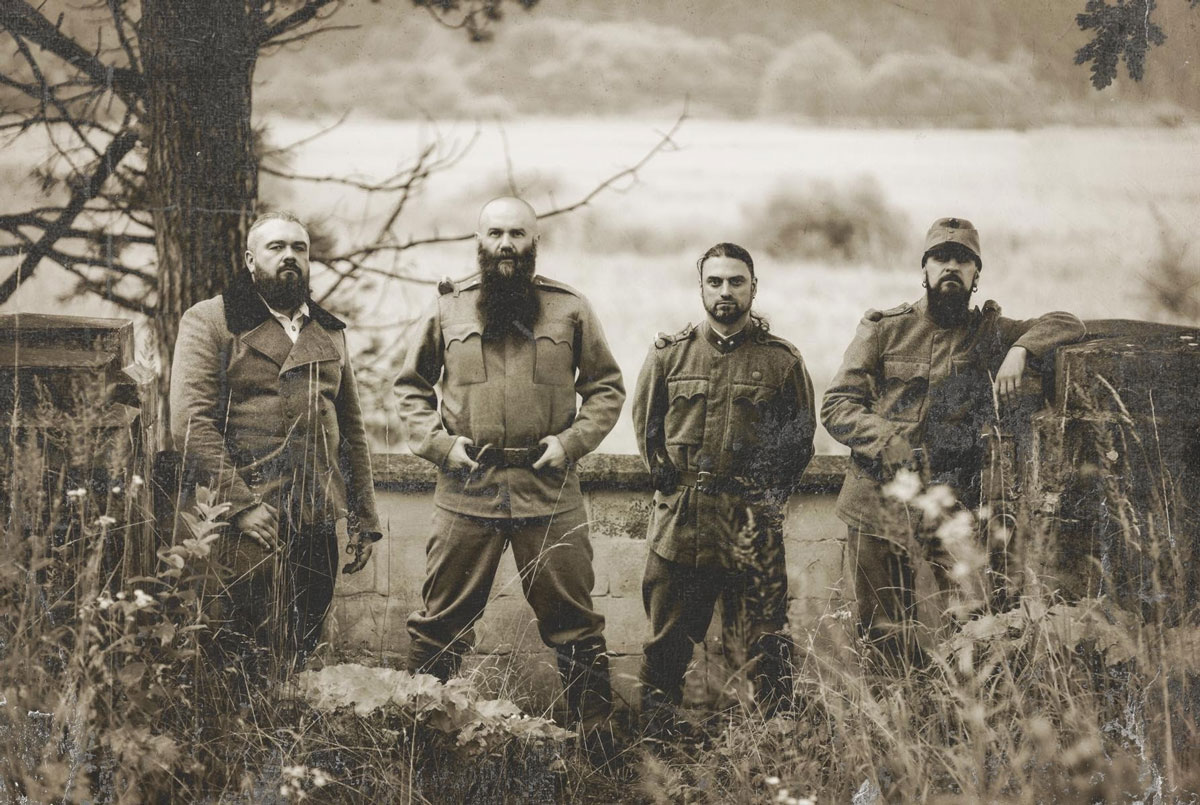Ukrainian blackened death/doom metal unit 1914 return with unrelenting power on their fourth studio album, Viribus Unitis, Latin for “With United Forces.” More than just the personal motto of Franz Joseph I, the former emperor of the Austro-Hungarian Empire, this title directly speaks to the band’s resilience through war, loss, and upheaval – a powerful symbol of survival and solidarity. Out on November 14, 2025 via Napalm Records, Viribus Unitis builds on the band’s acclaimed conceptual approach, reaching new emotional depths and musical intensity.
Continuing their chronicle of World War I, 1914 shifts their focus from the raw portrayal of death and destruction, to exploring themes of camaraderie, endurance, and the emotional landscapes of those who endured the horrors of trench warfare. While previous releases like The Blind Leading the Blind (2018) and Where Fear and Weapons Meet (2021) centered on the futility and finality of war, Viribus Unitis exemplifies the interpersonal bonds forged under fire and the strength of those warriors who made it home: broken, changed, yet still alive.
Alongside the album announcement, they reveal their first single: “1916 (The Südtirol Offensive)”, a despairing blackened doom anthem of defiance, recounting the brutal Battle of Asiago in grim, poetic detail. With thunderous riffs and crushing walls of sound, 1914 make the Austro-Hungarian attack on Italy tangible, bringing another piece of history to life through sound, relentlessly and uncompromisingly.
k.u.k. Galizisches IR Nr.15, Gefreiter, Ditmar Kumarberg about “1916 (The Südtirol Offensive)”:
“From May 15 to June 10, 1916, the Italian Front saw one of its most intense clashes: the Battle of Asiago, also known as the Trentino Offensive. The Austro-Hungarian army launched a massive surprise attack, hoping to crush Italian forces and break into the Venetian plains. Nearly 200 battalions and 2000 guns, including 280 heavy artillery pieces, were amassed in Trentino. The Italians, caught off guard, were pushed back – but held the line with fierce resistance. The combined toll of 230,000 casualties on both sides underscores the staggering human cost of the campaign. A brutal reminder of the mountain warfare that defined this front.”


